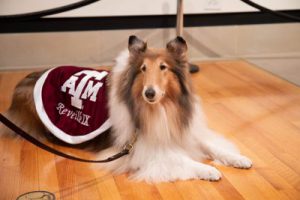I have been thinking about fun assessment methods to get the year started…you know, try something new and different, take a risk, all that good stuff. Although it is a new calendar year, it is the middle of the academic year, with a little more time to think about assessment before May. So, I’m going to share a quick idea that could resonate with the students (or even staff) you work with.
Photovoice, also known as reflexive photography or photoelicitation, is a qualitative methodology where participants take picture(s) as a representation of their answer to a question. It usually includes some sort of narrative, written or oral, to explain the meaning behind the picture. While it is typically has been used in participatory research, it can also be used in assessment to better understand a person’s reflections on their environment or even as a team building exercise.
Here’s how it could work with students in an organization or other students/staff you might work with. Participants are given a question or set of questions to respond to using photographs. (Some of you are not old enough to remember that students used to be given disposable cameras and had to get the filmed developed at a store!) They have a period of time to take the pictures and upload them somewhere or print them out. Because the vast majority of students today have a smart phone, they have built in photography capability. If there are students without smart phones, you need to think about alternatives/resources so they can equally participate.
The next step is either for participants to write a brief description of why this particular photo captured their answer or verbally describe the photo’s meaning. It depends on the situation as the best way to share the results. If you are working with the executive board of a student organization, you might take part of an exec meeting for each person to share their photo and meaning. Alternatively, you could also use it in a one-on-one discussion with an employee. You could use it at the beginning of the year to capture expectations or to be part of a teamwork activity. On the other hand, you might use it at the end of an experience to capture reflections on learning.
Here are a few sample questions to get you thinking about the process:
- What represents leadership qualities you desire?
- How do you see the university core values (leadership, integrity, selfless service, respect, excellence, loyalty) depicted?
- Where are places on campus you feel included and excluded?
- What did you learn from being involved in this student organization/employment experience/event?
The questions can be as unique as the situation, and the pictures will be unique to the individual taking them. This method is flexible, especially with the technology available.
As the facilitator of the process, you need to emphasize that there is no right or wrong answer—everyone has a unique perspective. It’s also helpful to point out that the quality of the picture is not the key element of the exercise. If the pictures are being shared publicly/ in a group, build trust and set parameters so participants are comfortable and safe sharing.
If you are interested in using photovoice as a data collection method and want assistance, please reach out to Student Life Studies. We are here to help.
Articles on Photovoice
Clark-Ibáñez, M. (2004). Framing the social world with photoelicitation interviews. American Behavioral Scientist, 47(12), 1507–1526.
Goodhart, F. W., Hsu, J., Baek, J. H., Coleman, A. L., Maresca, F. M., & Miller, M. B. (2006). A view through a different lens: Photovoice as a tool for student advocacy. Journal of American College Health, 55(1), 53–56. doi:10.3200/JACH.55.1.53-56
Harrington, C. E., & Schibik, T. J. (2003). Reflexive photography as an alternative method for the study of the freshman year experience. NASPA Journal, 41(1), 23-40.


